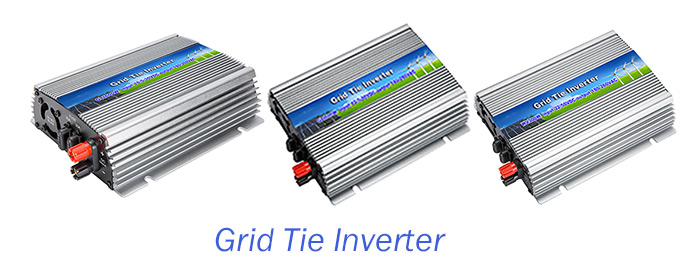As the world continues to seek sustainable energy alternatives, solar power has emerged as a prominent solution, especially for residential use. Home solar systems harness sunlight and convert it into electricity, offering homeowners a clean, renewable energy source. However, understanding how much electricity a home solar system can produce is crucial for those considering this eco-friendly investment.
Understanding solar power generation:
Solar panels, typically installed on rooftops or in open areas with ample sunlight exposure, contain photovoltaic cells that convert sunlight into electricity. The amount of electricity generated by a solar system depends on several factors:
- Sunlight Availability. The primary determinant of solar power generation is the amount of sunlight the panels receive. Regions with abundant sunlight tend to produce more electricity than those with frequent cloud cover or shade.
- Panel Orientation and Tilt. The angle and orientation of solar panels affect their efficiency. Ideally, panels should face south in the northern hemisphere and north in the southern hemisphere to capture the maximum sunlight throughout the day. Additionally, the tilt angle should be adjusted based on the latitude of the installation site for optimal performance.
- Panel Efficiency. The efficiency of solar panels varies depending on the technology and quality. Higher efficiency panels can generate more electricity from the same amount of sunlight compared to lower efficiency ones.
- System Size. The size of the solar system, measured in kilowatts (kW), determines its electricity production capacity. Larger systems with more panels can generate more electricity, provided there is sufficient space and sunlight.
- Weather Conditions. While solar panels can still generate electricity on cloudy days, their output may be reduced compared to sunny days. Extreme weather conditions like storms or heavy snowfall can temporarily disrupt solar power generation.
If you plan to design and install a grid tie solar PV system for your home, you will want to know how much electricity the system can produce each year. Now we will take the roof of 60m2 as an example to make this calculation.
Relatively speaking, if the effective area of each family roof is 60 square meters, it will be rather enough. Then, what maximum capacity of solar panels can be installed for the 60 m2 roof? How much electricity of solar panels can be generated every day?
At present, the household solar power system generally adopts the monocrystalline silicon solar panel and polycrystalline silicon solar panel. Its specification is generalized as 36V 280W, and the single piece of solar panel generally has an area of 1.8 m2. The solar panels are connected into different group in series and parallel. In installation, the appropriate inclining angle, and the correct lighting direction should be selected. In addition, each group of solar panels should be staggered with a certain distance, thus avoiding the mutual stacking and sheltering in sunshine illumination. In the meanwhile, the solar panel array should be reserved with passage for the cleaning and maintenance convenience. Therefore, for the roof of 60m2, it is suggested to appropriately arrange 20 pieces of solar panels. The capacity is 5.6kW and the total area of the PV modules is 36 m2.

How much energy do the solar panel generate every day?
This is mainly determined by factors such as the photoelectric conversion efficiency of the solar panel, the sunshine time, and the mounting angle.
The photoelectric conversion efficiency of the solar panel refers to the ratio of the maximum output power of the solar panel to the solar power that is irradiated on the panel under standard test conditions. Generally, the photoelectric conversion efficiency of polysilicon cell module and monocrystalline silicon cell module is not less than 15.5% and 16% respectively.
Therefore, under standard sunshine conditions (1000W/m2), the actual power of the solar panel array is: 5.6kW/0.16=3.5kW. If the solar effective power generation time is calculated according to the optimal 6 hours (10:00-16:00), the power of 21kWh can be generated per day. If it is calculated by 240 days in the whole year (20 days of effective solar power generation per month), the total PV power generation is 5040kWh.
Of course, the above calculation is based on the ideal conditions. The actual energy generated by a solar power system is affected by many factors, including the selection, installation and maintenance of the solar kits like bracket, solar inverter and so on, other than the temperature, weather, and other conditions.
The bracket for the solar panels is an important component of the solar power system. The bearing capacity of the roof structure is the main factor affecting the installation of the PV system. If it is unable to meet the specification requirement, the house must be reinforced to ensure the safety and reliability. In addition, before fixing the bracket, attention must be paid to the maintenance of the roof coating and waterproofing and other measures. At the same time, the coverings around the house, such as large trees and nearby buildings, will directly affect the effective time and power generation efficiency of the solar modules to receive solar radiation.
The home solar power system is connected to the public power grid with two different grid-tie schemes of single phase 110V/120V/220V/230V/240V AC or three-phase 380V/400V/415V/440V/460V/480V AC. If it is connected to the single-phase power grid, the optimal on-grid inverters are usually 1kW, 3kW, 5kW, etc. If it is access to three-phase power grid, the optimal grid-tie inverters are generally chosen above 10kW.

Home solar systems offer a renewable energy solution that not only reduces electricity bills but also contributes to environmental sustainability. Understanding the factors influencing solar power generation and estimating the electricity output of a solar system is essential for homeowners considering this investment. By evaluating sunlight availability, system size, efficiency, and local weather conditions, individuals can make informed decisions to harness the full potential of solar energy for their homes. As technology advances and solar power becomes more accessible, the future looks bright for residential solar adoption, paving the way for a cleaner and greener energy landscape.
